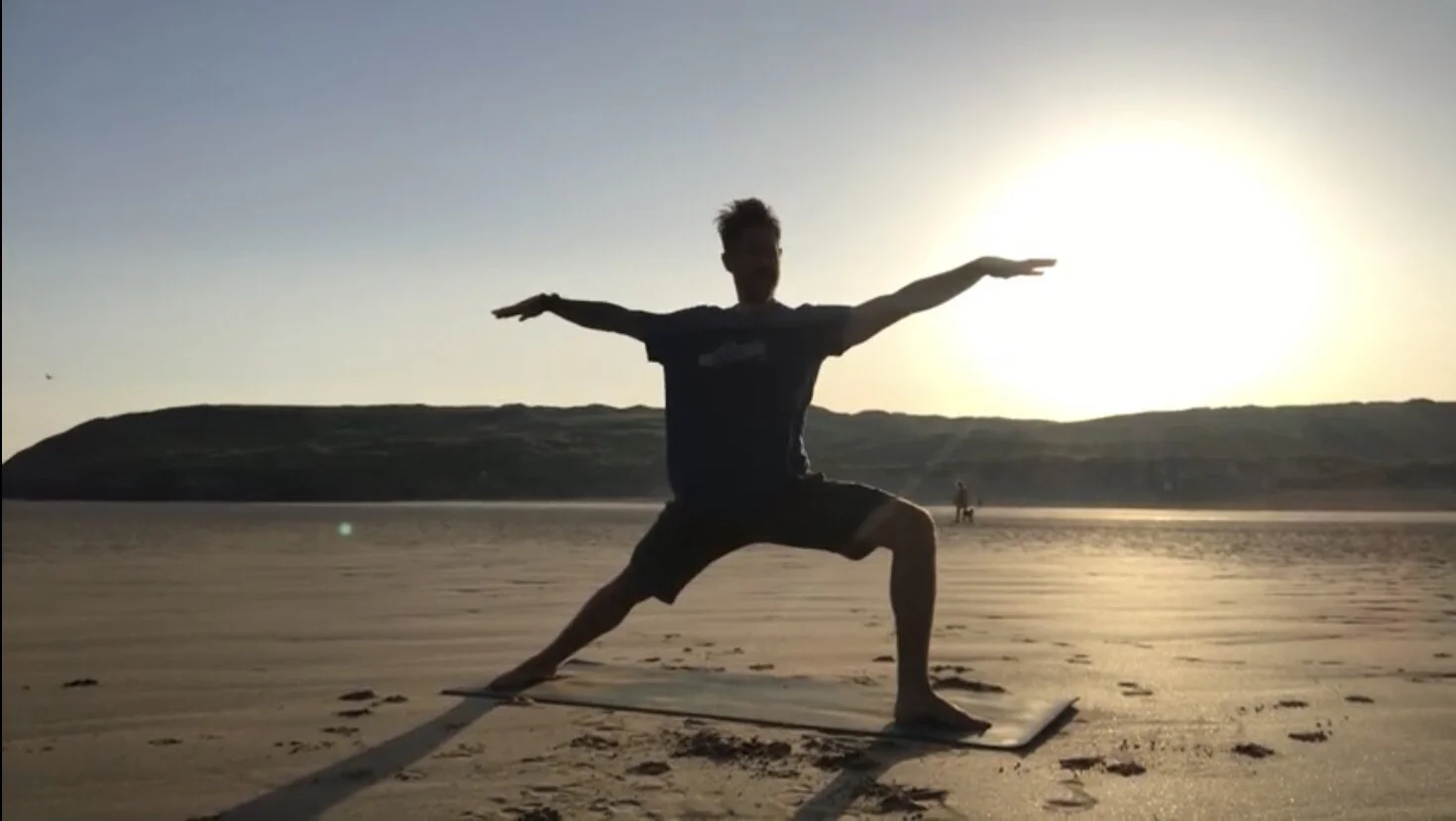But have you ever wondered what they are all about and what the story behind the pose is? In case you are unaware most yoga poses have some kinda story behind them, many taking their names from Hindu mythology. This also gives the poses some actual purpose and meaning when practiced with an intention.
For instance, today we will discuss the Virabhadrasana sequences (1,2 &3). Just as a quick over view incase you were unaware, this word can be broken down into 2 main parts (we will split it further in a bit) 1st being Virabhadra and the 2nd being asana. You probably will recognise that asana gets used a lot in yoga Sanskrit words and that’s cos it’s at the end of every pose we do as it means pose/posture.
So then, let’s get to the story.
Back in the time of the gods (whenever that might be) shiva was hanging out in his gave dancing, getting stoned and meditating ALOT. Shiva hooked up with the daughter of a pretty powerful guy called Daksha. Her name was Sati and was a strong devote of shiva. She spent ALL her time dedicating her life to shiva and performed severe penances to the lord of destruction, shiva.
This impressed shiva, who eventually married sati. The issues comes with daksha, he wasnt into shivas (what we now see as ) typically hippy yogi appearance/life…dreads, likes to get stoned, dances around whenever he feels like it, hangs out covered funeral pyre ash and is one with the creatures of the world (ok some of those aren’t typical these days but still.)
To kinda spite the lovers (sati and shiva) he organised a big old party (a fire ceremony calls a yagna) to which he invited EVERYONE, all the gods from all the worlds, except shiva and sati. This broke satis heart who was hurt that her father was so spiteful towards his daughter and the man she was deeply in love with.
Sati then decides to go to the yagna, despite not being invited, to which shiva says….nope, I don’t care enough and I’m not invited, he’s clearly being a prick and trying to wind us up, let’s avoid it (I am paraphrasing now). Sati decides to go all the same and when she gets there daksha goes out of his way to humiliate her in feint of everyone, playing the big I AM. He insults shiva, saying he’s basically just a filthy beast. This upsets Sati so much that she practices deep meditation practices to raise her temperature so much that she self immolates (sets her self in fire)
There is a big fight kick off between shivas followers and Dakshas and dakshas win the skirmish. When shiva hears all that has transpired, let’s just say, he loses his shit. He cuts a lock of his hair and breaks it in two and throws It into the earth. From this two killers are raised up. The warrior goddess kali and Virabhadra (broken down this translates to vira (hero) and bhadra (friend).
These two are sent to the party to take vengeance on Daksha and all his friends and followers. This brings us to what we really wanna know, what the warrior poses signify and what we can bear In mind as we practice them.
Virabhadrasana 1 = the demon hero friend being raised out of the ground with two swords raised straight above his head
Virabhadrasana 2 = this is the warrior demon setting his sights and pointing his sword at shivas father in law, daksha (I always like to make this point as some people can perhaps relate to the in laws being a nightmare 🤷♂️🤣)
Virabhadrasana 3 = Virabhadra launching to behead daksha with both swords out in front to just slice through the father in laws neck.
So what does this even mean?? Apart from sounding like shiva has a temper. Well what followed is important. Shiva suddenly felt full of sorrow for the lose of his wife and the destruction that was left behind. This sorrow turns to compassion and he decides to bring daksha back to life and so finds a goats head (probably just kicking around like you tend to find at these kinda party’s 🤷♂️🤣). This story ends with shiva carrying his wife across the Indian continent to find a suitable resting place in peace for him to become a meditating recluse again, this then goes on to lead into another story in which sati comes back to life as Parvati and remarries shiva, but that’s for another day.
What this story is trying to tell us is that Shiva is our higher self, who slays our prideful ego, (Daksha), for the sake of the our hearts (Sati). Trying to bring to our attention during our practice and our lives, the idea that our ego wants to constantly rule us over our hearts and that we sometimes need to violently cut back our ego to let the compassionate side of our selves view our hearts wishes. This story leading into the next also helps us find the idea that love is the essential nature of our hearts and that in one form or another will always return.
So I hope that in some way helps understand why we do warrior 1,2,3 and perhaps gives another lens to view them through when you are next practicing or just when you are thinking about situations in life.





